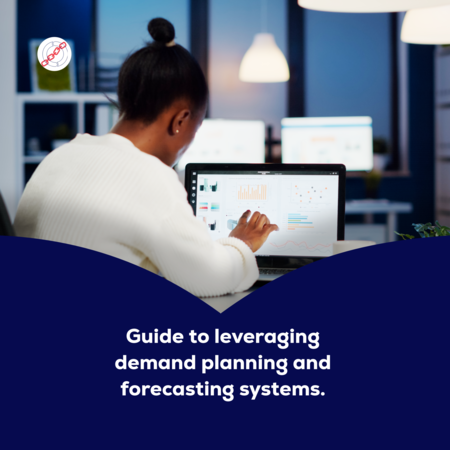
Every effective supply chain piggybacks on customer demand, giving demand planning and forecasting systems a significant role in the operation.
As technology solutions permeate the African supply chain landscape, more stakeholders increasingly leverage the DPFS to estimate or predict demands. They then use the information to plan and run the supply chain while allowing for margins of error. But so many factors affect the effective utilization of any demand planning and forecasting system.
This article will explore them in detail.
Why is a Demand Planning and Forecasting System Important
1. Optimizing Inventory Management
Inventory management is a key aspect of your supply chain, but it is also one of its most expensive aspects.
Supply chains must hold inventory, which could cost money due to storage, insurance, and security. Implementing a DPFS allows you to plan your inventory effectively, hold only what is necessary, and ultimately reduce holding costs. Just make sure to consider the type of supply chain and its products when planning inventory management.
2. Effective Resource Allocation
Supply chain management systems are increasingly complex.
The average supply chain operation has many parts moving simultaneously and needing different resources. However, allocating and managing these resources without ample information is difficult. A robust demand planning and forecasting system will provide accurate and reliable data to enhance the resource allocation process, ensuring the supply chain runs smoothly.
3. Improve Production Efficiency
Demand planning and forecasting systems help the production arm of your supply chain develop a schedule that allows the production team to work more effectively.
When your supply chain knows what demand to expect, it allows for production planning and finishing around that demand. This way, your production bottlenecks are greatly minimized. It will also optimize the process and reduce lead times.
4. Minimize Risk
Supply chains are always exposed to risks.
Unfortunately, these risks can be detrimental to its survival. During the pandemic, for example, there was very high uncertainty in customers’ demands, which many supply chains could not manage, leading to their failure. On the other hand, the supply chains that succeeded relied greatly on the DPFS.
5. Enhance Supply Chain Collaboration
Supply chain collaboration is the part of the supply chain that includes stakeholders ( internal and external) working together to achieve the primary objective of the supply chain.
These stakeholders understand the expectations through demand planning and forecasting and can quickly mobilize resources to effectively achieve them. The alternative is for these stakeholders to work together blindly. The supply chain will struggle to achieve decent results in the 21st century.
Elements of a Demand Planning and Forecasting System
Although the DPFS are critical tools for the modern supply chain, they won’t work as expected without putting some elements or factors in place.
These are effective because they comprise the foundation of your supply chain planning efforts.
1. Data Collection and Analysis
This entails collecting and analyzing historical and current data.
Past behavior predicts future behavior. The DPFS draws insight into customer behavior over time, allowing your supply chain to predict their future behavior.
2. Market Research and Insight
Market research helps the supply chain understand market trends and how customers interact with competitive and complementary goods.
This broadens your insights into customer behaviors. It includes what they like or dislike about the supply chain or its competitors’ products, giving room to implement the necessary changes.
3. Demand Modelling and Scenario Planning
Drawing up a demand model and scenario planning allows your supply chain to use gathered data to navigate potential scenarios in the demand and supply of its products.
This helps mitigate your supply chain’s risk.
4. Collaboration with Relevant Supply Chain Stakeholders
Relevant stakeholders in the supply chain also help facilitate demand planning and forecasting.
This involves gathering all necessary information that could negatively impact demand, such as production delays or logistic disruptions.
Methodologies of Demand Planning and Forecasting Systems
There is no one methodology for implementing or leveraging the DPFS.
This is because supply chains vary in nature and outcome. Finding the right methodology for your supply chain is critical. However, it will depend on factors such as data availability, the nature of the supply chain, and historical demand patterns.
1. Time Series Analysis
This method relies solely on historical data to predict future demands.
It implies that the historical data will continue into the future. But despite its popularity, this methodology faces a significant challenge. They are external factors, such as economic downturns and policies, that can significantly impact customer demand. Without considering them, your supply chain is exposed to numerous risks.
2. Regression Analysis
Every DPFS analysis works on two variables.
These are the demand variable and any other independent variable. The regression analysis studies the relationship between the demand variable and at least one independent variable. Some examples of independent variables are price, government policies, level of competition, and season.
The regression analysis studies or determines the impact of these variables so the information can be used to predict future demands.
3. Delphi Method
This methodology entails collecting industry experts’ opinions and aggregating them to make demand forecasting or planning decisions.
The problem is there are too many faux experts, and recognizing them can be tricky.
4. Predictive Analysis and Machine Learning
This technique relies on collecting large and broad data and then feeding it to an algorithm for analysis.
The algorithm is then expected to make predictions based on identified patterns, demand segmentation, and other patterns.
5. Market Surveys and Analysis
This method deals directly with the customer.
It helps you collect data on customers’ preferences, challenges, and anticipated demands, giving you valuable insights into their state of mind.
How to Implement Effective Demand Planning and Forecasting Systems
DPFS relies on accurate information to function efficiently.
One wrong move can derail the entire system and the supply chain. This is why careful planning and execution are required to implement a DPFS successfully. But how do you do that?
The following steps will guide you.
Step 1: Define the Goals and Objectives
Before implementing the system, identify the supply chain objectives and goals.
It will help leverage the demand and forecasting system’s capabilities. However, before determining the goals and objectives, identify the key metrics and outcomes you aim to improve, such as forecast accuracy, inventory optimization, or customer service levels.
Step 2: Identify Data Sources
Identify the relevant data sources you wish to rely on for your DPFS.
This may include historical sales data, customer orders, market data, economic indicators, and other data sources that can provide insights into demand patterns. Remember that these data sources will feed your demand and forecasting system. Sp ensure they are the right ones for your supply chain.
Step 3: Select Forecasting Methodology
Some common forecasting techniques include time series analysis, regression analysis, and the Delphi method.
However, select a forecasting methodology that fits your supply chain requirements and the nature of the available data. To improve accuracy, consider combining DPFS methodologies for your supply chain.
Step 4: Implement Forecasting Software
Invest in forecasting software or tools that align with your supply chain needs.
These tools automate data analysis, forecasting calculations, and reporting, saving time and enhancing accuracy. But when choosing, go for a user-friendly system that will integrate with the existing systems. It will enhance a seamless data flow.
Step 5: Set Forecasting Parameters
Configure the forecasting system by setting parameters such as time horizons, forecast intervals, and aggregation levels. Define the level of detail required for accurate forecasting, whether at the product, customer, or geographical level.
Step 6: Monitor and Review
Continuously monitor and review the DPFS’s performance.
Measure forecast accuracy, track forecast errors, and assess forecasts’ impact on key supply metrics. The market is constantly changing, so regularly reviewing and refining the forecasting model will help the system adapt to changing market conditions.
Step 7: Continuous Improvement
DPFS requires ongoing improvement and refinement.
To achieve this, incorporate feedback from users and stakeholders and stay updated on the latest forecasting techniques, industry trends, and technological advancements.
Wrap Up
Demand planning and forecasting systems are essential for the success of any modern supply chain.
Even for African businesses. It may take a little getting used to but supply chains across the continent stand to benefit immensely from it. However, getting the most out of it is another matter, although this article has completely addressed this issue.
Frequently Asked Questions
1. What is the difference between Demand Planning and Demand Forecasting?
They are mostly similar but differ in that forecasting is predictive action while planning is corrective action taken to meet the demand.
2. What are Demand Planning tools in Supply Chain Management?
They are computer software and algorithms that help your supply chain plan, manage, and prepare for future customer demands and inventory, ensuring effective supply chain management.
3. What are the components of Demand Forecasting
There are generally six components: auto-correlation, random variation, average demand, trends, and seasonal and cyclical elements.
4. What are the Relevant KPIs of a Demand Planning and Forecasting System?
There are six of them. Forecast accuracy, forecast bias, mean absolute percentage error, weighted mean absolute percentage errors, inventory turnovers, and stock out rate.

Obinabo Tochukwu Tabansi is a supply chain digital writer (Content writer & Ghostwriter) helping professionals and business owners across Africa learn from real-world supply chain wins and setbacks and apply proven strategies to their own operations. He also crafts social content for logistics and supply chain companies, turning their solutions and insights into engaging posts that drive visibility and trust.

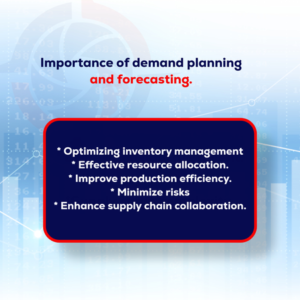
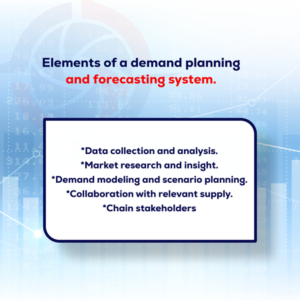
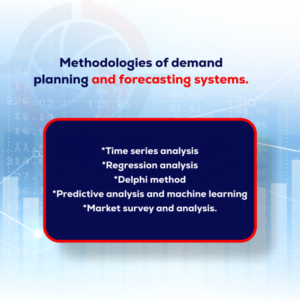
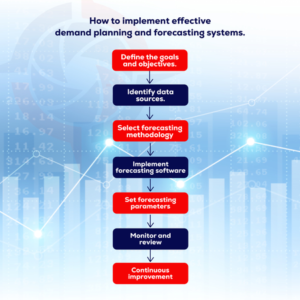








2 thoughts on “Guide to Leveraging Demand Planning and Forecasting Systems:”